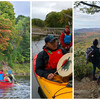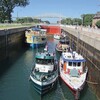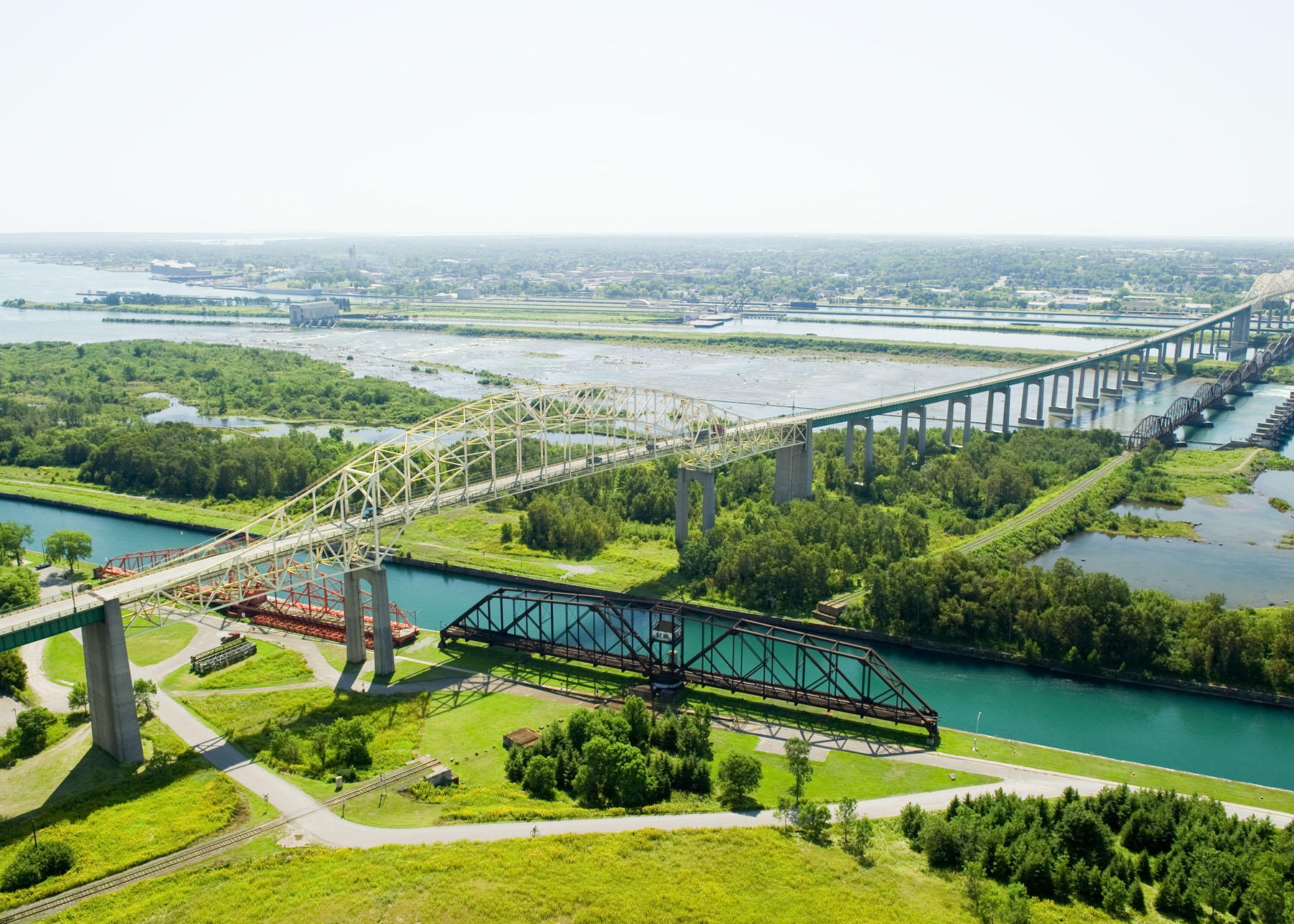
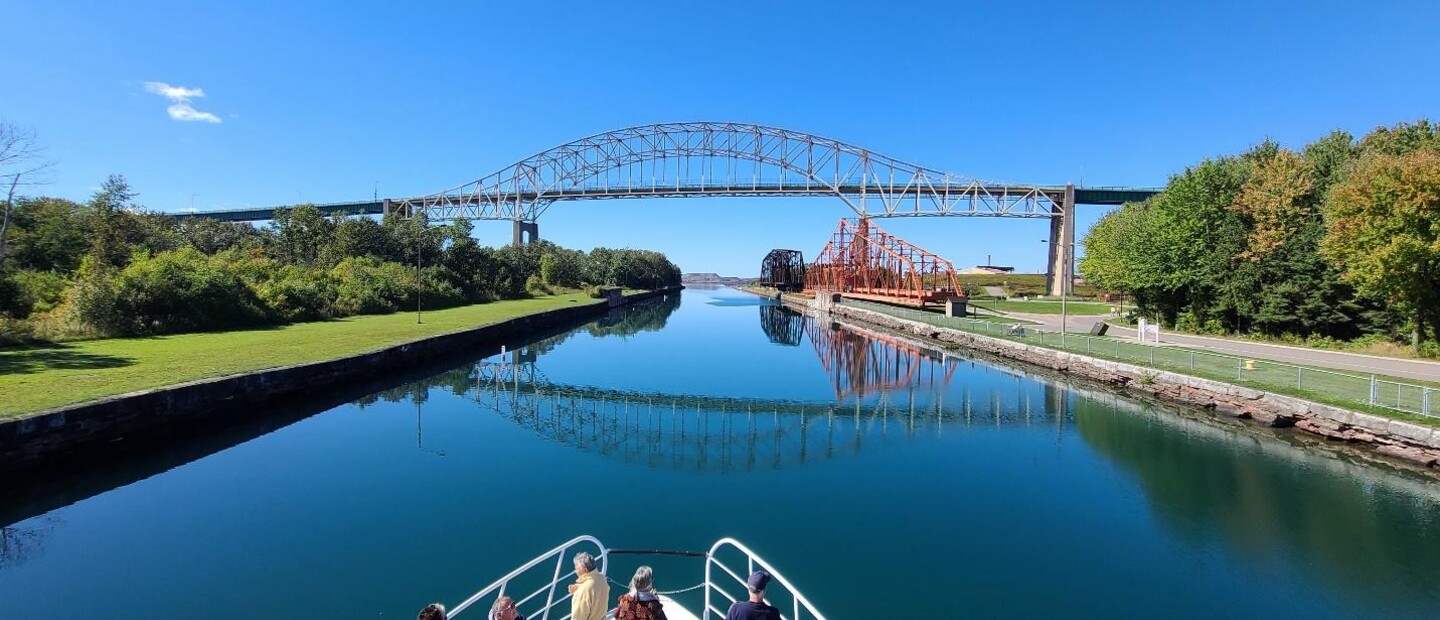
A Guide to the Sault Ste. Marie Canal National Historic Site
One of North America’s most historically significant waterways is the Sault Ste. Marie Canal. Located on St. Mary’s River, along the southeast shore of Lake Superior in Sault Ste. Marie, Ontario, the “Soo Locks” are an engineering marvel facilitating both trade and travel. The area is also known as Baawaating meaning “place of the rapids” in Anishinaabemowin—it remains a culturally significant area to Indigenous peoples throughout the Great Lakes and beyond.
Here's our complete guide to exploring the Sault Ste. Marie Canal National Historic Site including the new visitor's centre, Attikamek Trail, and the world's last emergency swing dam.
History of the Sault Ste. Marie Canal: Learn the Connection to the Water and Cultural Heritage of This Historic Landmark
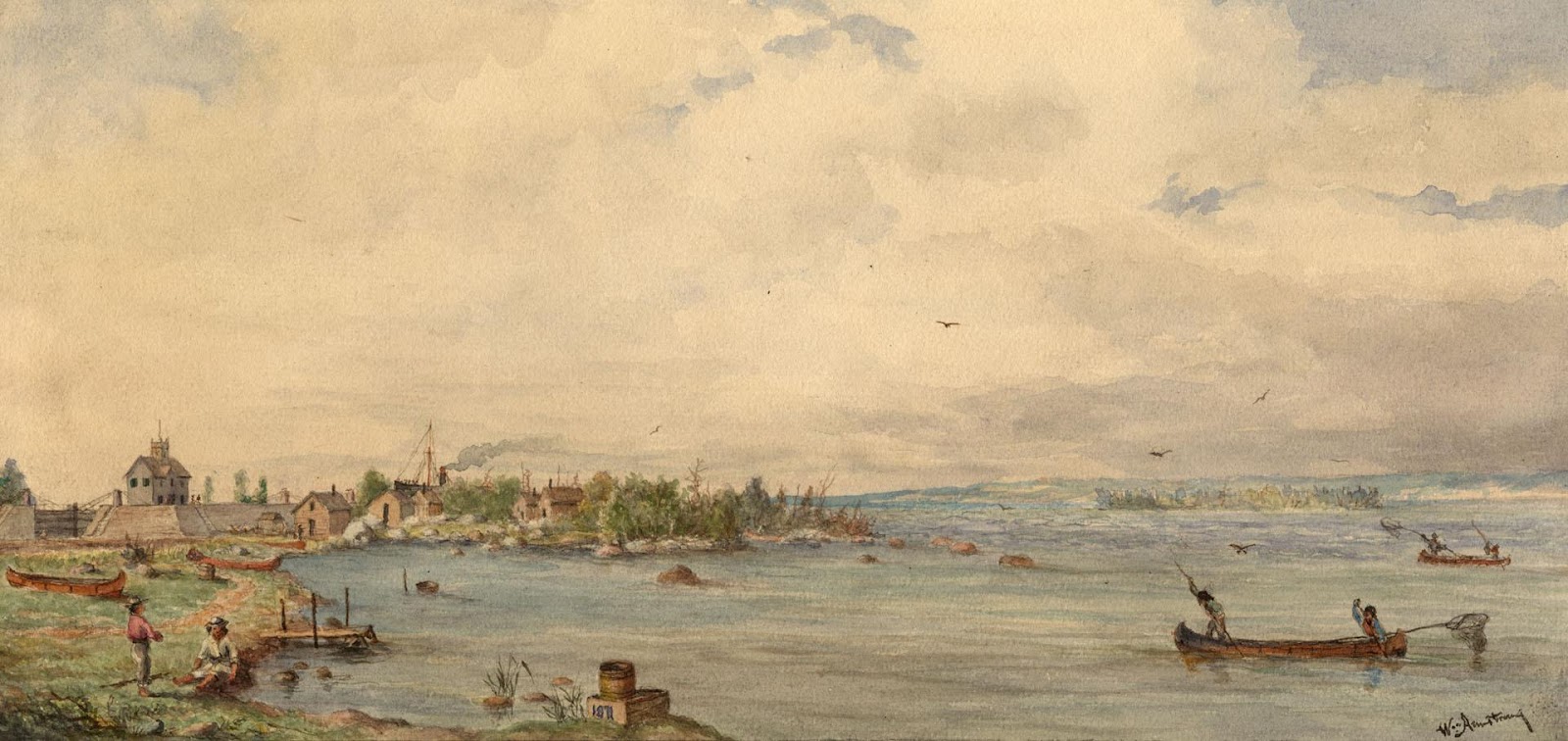
There are three main islands on the Canadian side of the SSM Canal:
- North St. Marys Island—the first island upon crossing the hydroelectric dam on Canal Drive and the location of the Sault Ste. Marie Canal National Historic Site (SSMCNHS).
- South St. Marys Island—south of SSMCNHS.
- Whitefish Island—the southernmost island located next to the Canada-US border.
Built in 1895, the Sault Ste. Marie Canal was the world’s longest lock and the busiest system in the world for many years. It was the first to operate using electricity and the last link in a Canadian navigational route from the Atlantic Ocean, through the St. Lawrence River to Lake Superior. Its location on St. Marys River, a 125 km long Canadian Heritage River that links Lake Superior to Lake Huron is a vital artery in Ontario and beyond, with over 2,000 pleasure crafts passing through every season.
When visiting Whitefish Island and the surrounding areas, please keep in mind that we are entering a sacred place and to practice Leave No Trace principles—stay on the trail, leave what you find, and respect wildlife and the land.
“So much medicine can be found along the trails… when we leave the trail, we ask for forgiveness from the flowers, ants, and the little beings on the edges of the trail so we don’t take their lives and respect their roles to continue to flourish on the islands. Treat the earth and the water with respect as everything is living; everything is part of a family.”
—Dean Sayers, Former Chief of Batchewana First Nation
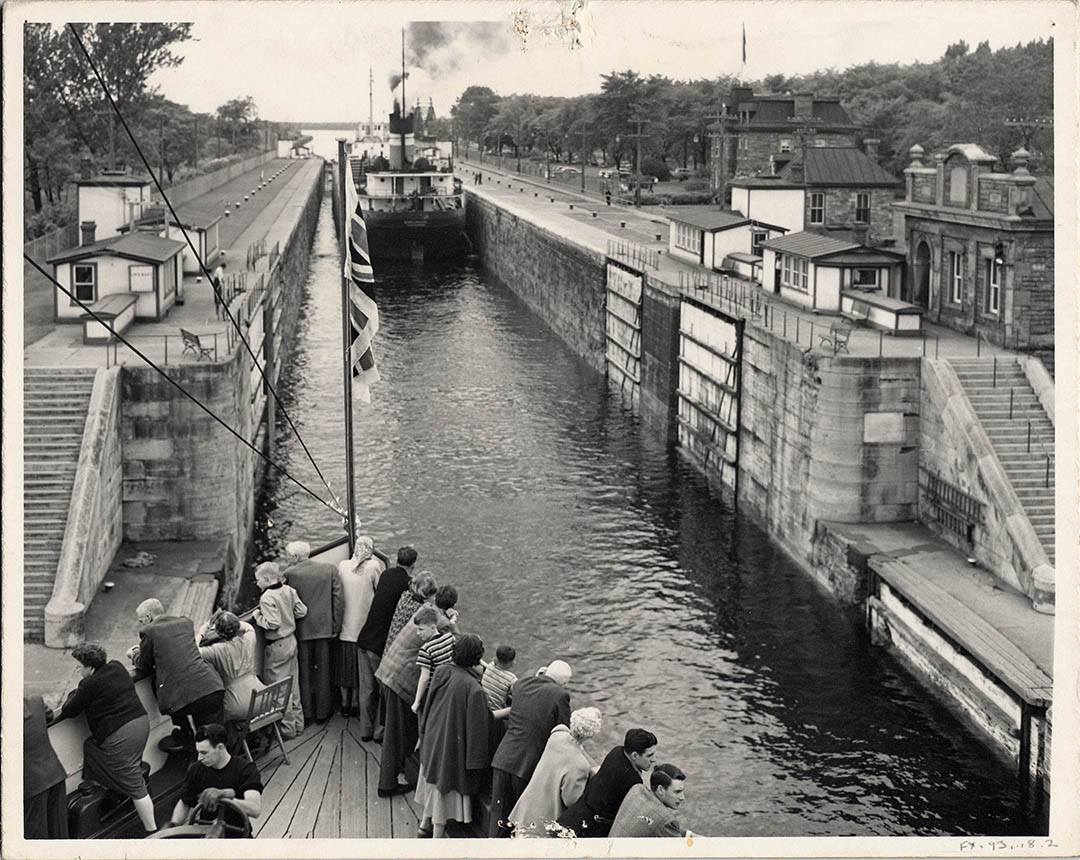
Top 7 Things To See at the Sault Ste. Marie Canal Historic Site
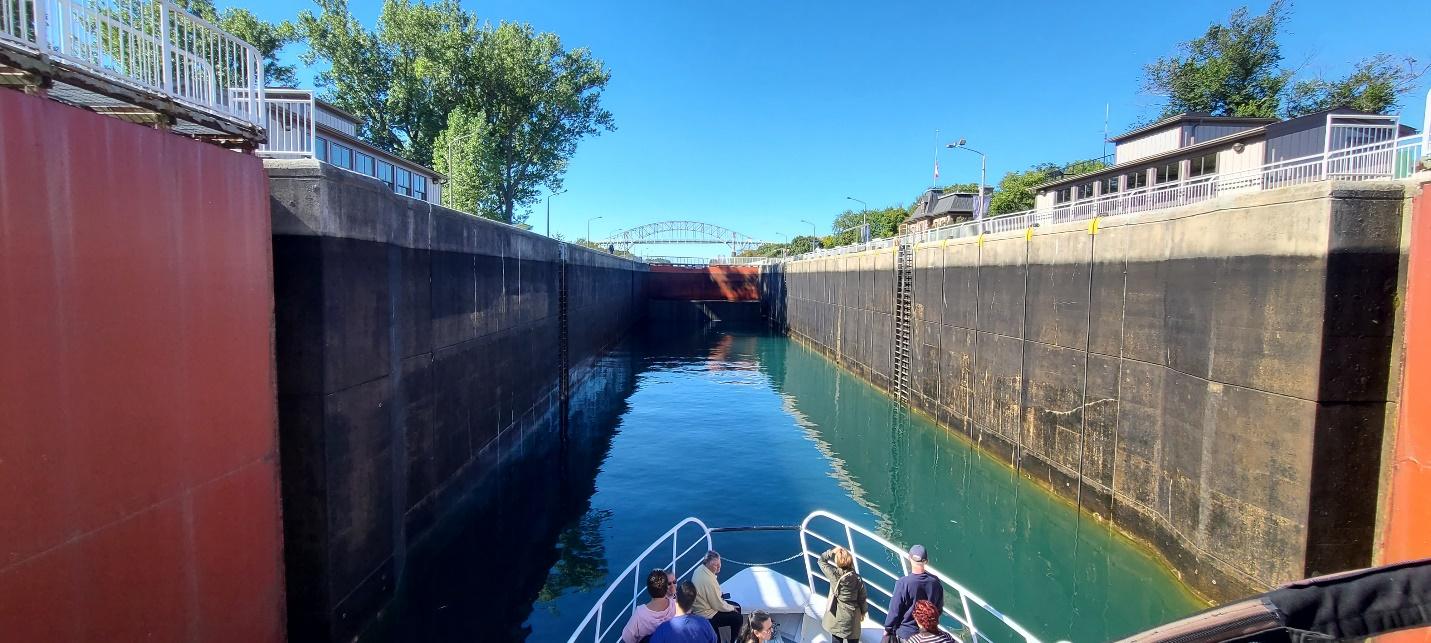
With an area that has so much historical, cultural, archaeological, architectural, and even hydrological significance, there is something for everyone to enjoy!
With free admission to the Sault Canal, here are some ideas for exploring this special area:
1. Visit the Sault Ste. Marie Canal Historic Site Visitor Centre
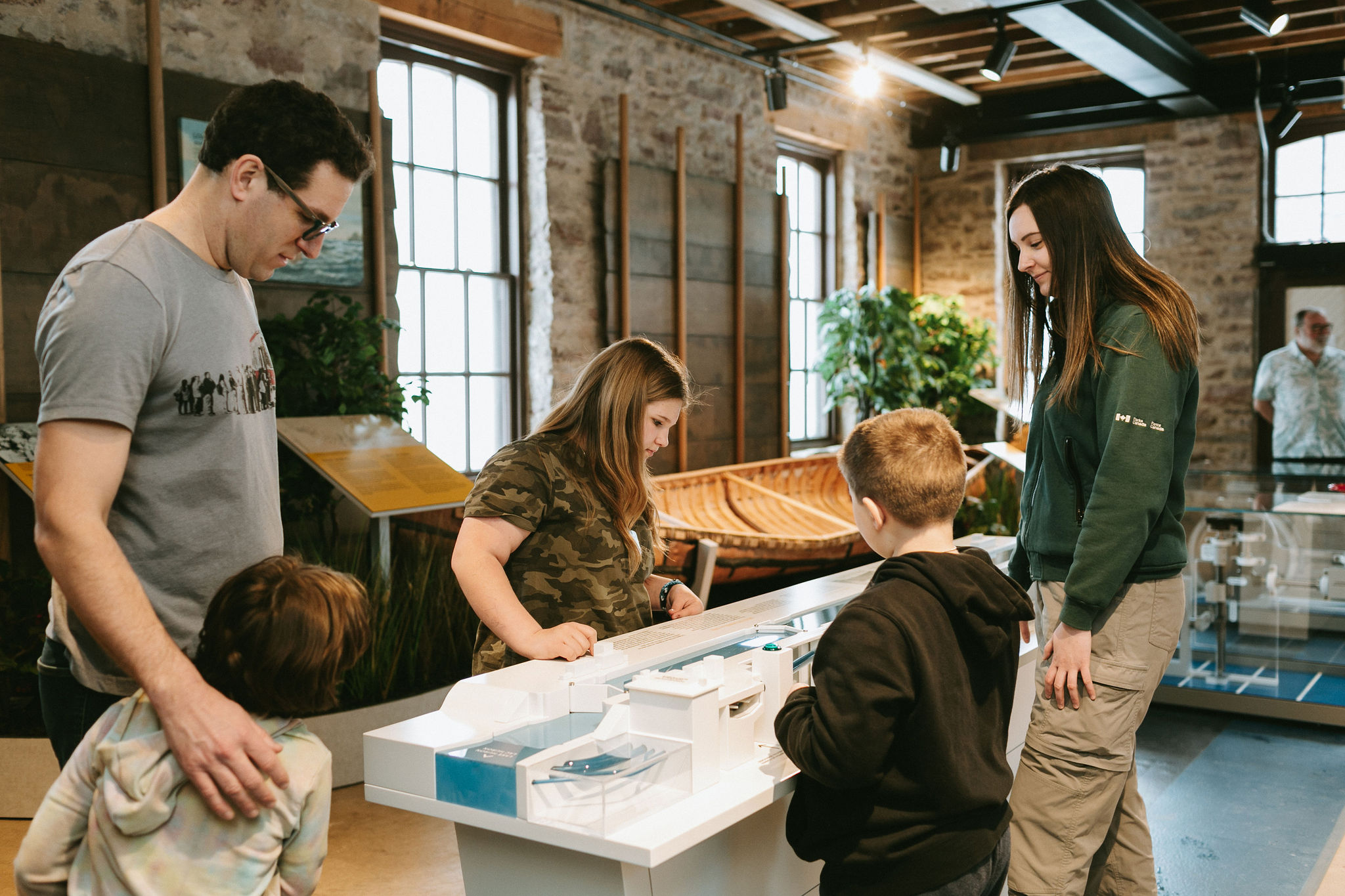
The new Visitor Centre officially reopened in 2022 with the self-guided exhibit located in the historic Stores Building and Blacksmith’s Shop. The new visitor centre and exhibit bring Indigenous history to the forefront of the visitor experience at the canal, including a 6.1-metre-long birch bark canoe on loan from Batchewana First Nation.
Built in 2010 by an Elder of the Sault Ste. Marie Tribe of Chippewa Indians from Sault Ste. Marie, Michigan, with assistance from many Batchewana First Nation members, the canoe was crafted to repatriate the remains of six Anishinaabe people, three men and three women, that were stolen from graves on Whitefish Island in 1875.
The exhibit also shares stories of the lock’s construction and the Chicora incident in 1870, which involved the Métis and prompted the Canadian government to build its own canal. It shares the canal’s history as a commercial operation, its connection with the people who lived and worked there, and the impacts on Batchewana First Nation and the Historic Sault Ste. Marie Métis People, when the canal was built.
Learn about the 1850 Robinson Huron Treaty, which set aside Whitefish Island for Batchewana First Nation, but was ignored when the island was used for railroad construction in 1905. The island was only returned to Batchewana First Nation in the 1990s.
Parks Canada interpreters offer site tours between June and October (heritage presentation fees apply).
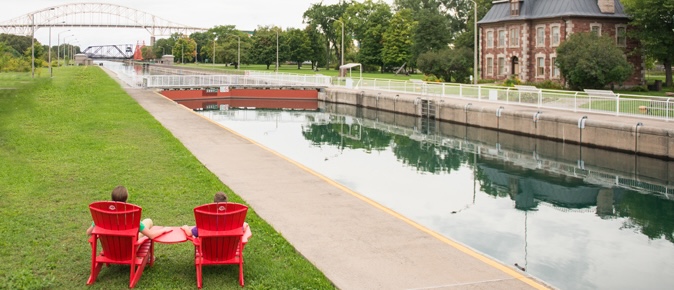
2. The St. Marys Rapids
Hike Whitefish Island and get a view (enjoy the sounds as well!) of the rapids.
3. The View from the Parks Canada Red Chairs
Take a break and relax on these red Adirondack chairs next to the canal. While it's now only a recreational lock on the Canadian side, when the canal was used for commercial boats in the early 1900s, watching ships lock through was a highlight for locals. Canadian Pacific Railway ships would lock through, some even having their own bands!
Today, watching boats pass by is not only a popular hobby at the canal but also a relaxing way to spend time outdoors by the water.
With thanks to Liana from Parks Canada for sharing this fun fact!
4. The Sault Ste. Marie Canal's Historic Buildings
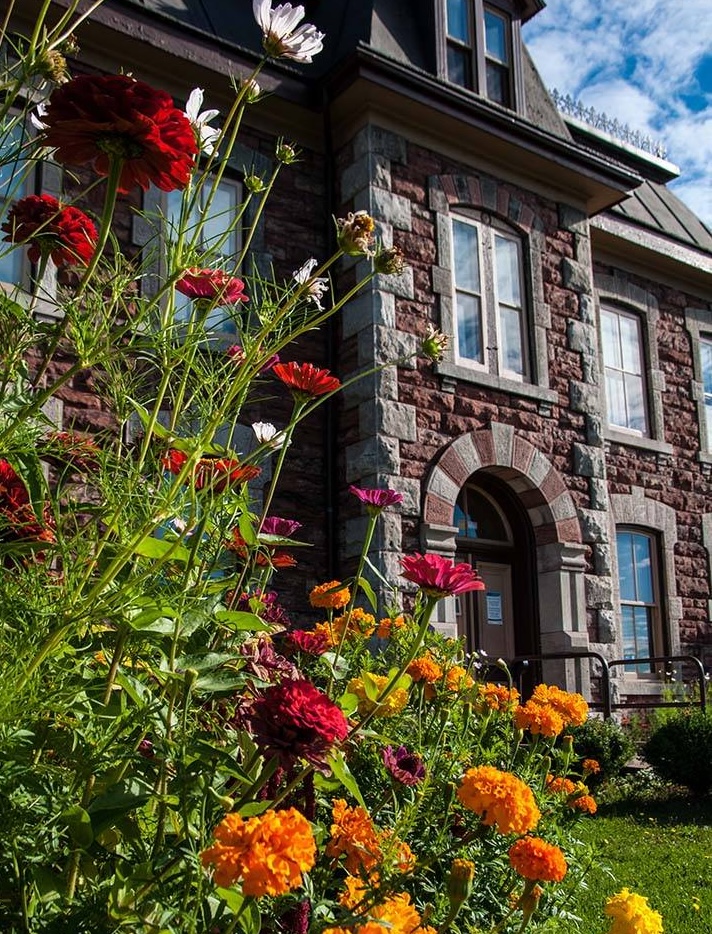
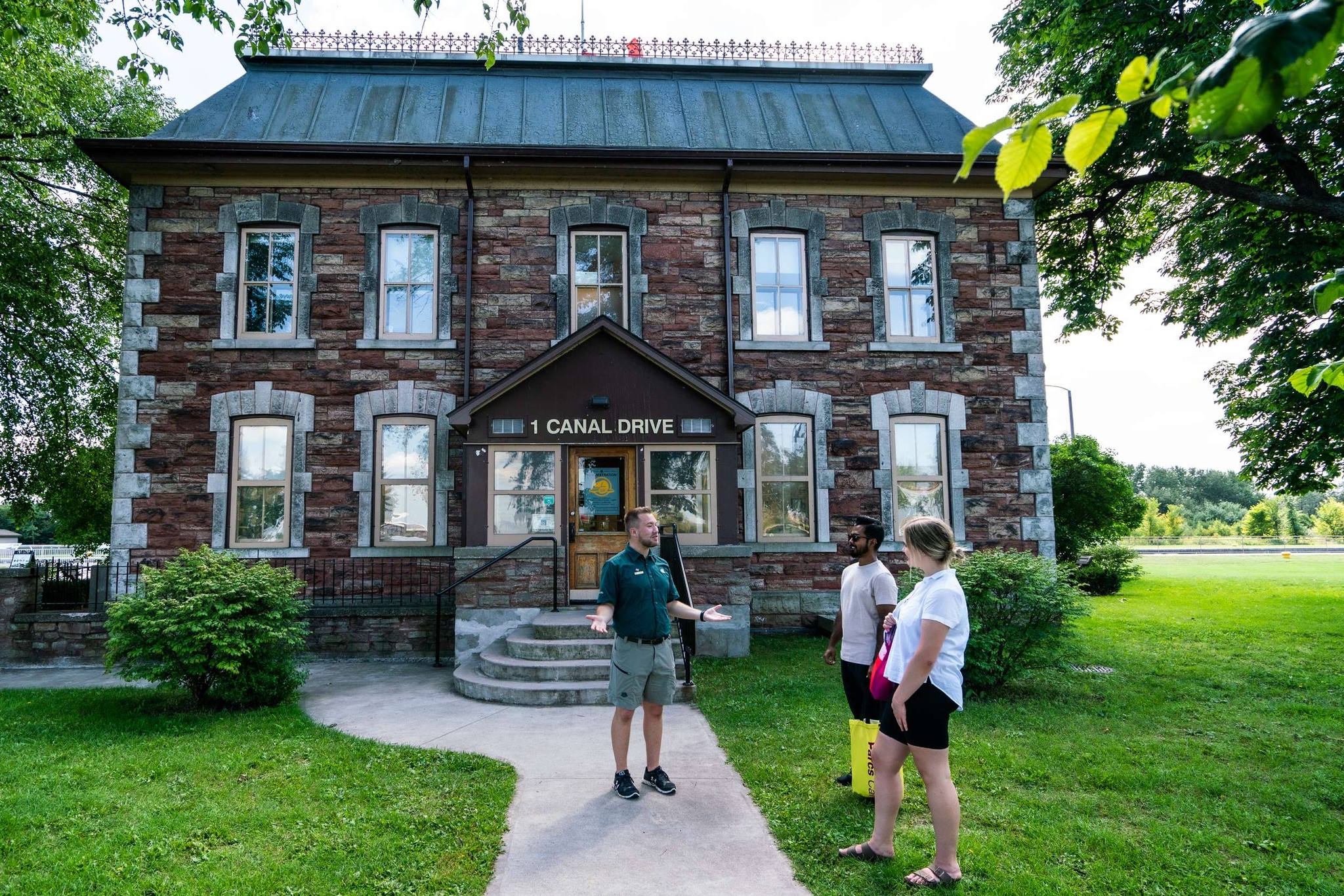
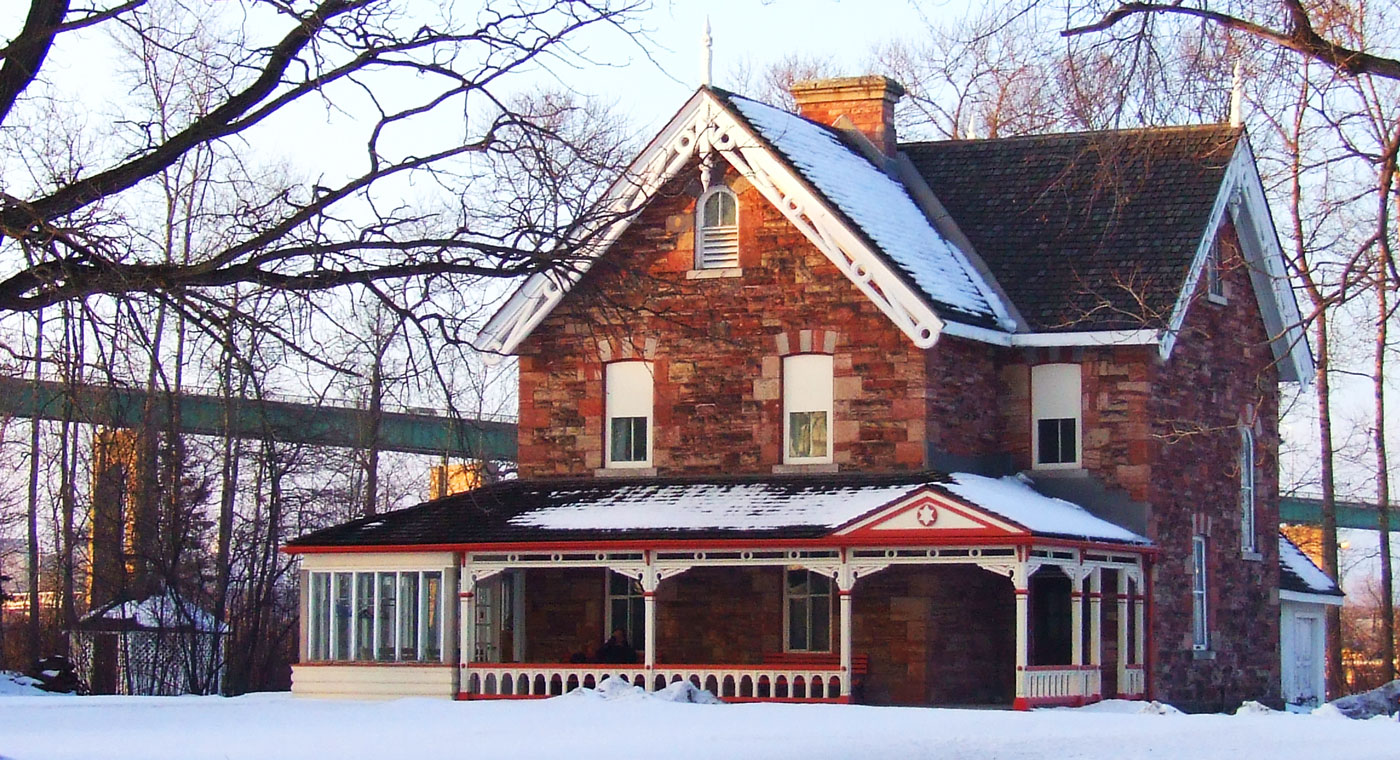
This one is for the geology buffs! Several buildings, such as the Administration Building, were constructed with locally sourced red and white banded sandstone, formed during Cambrian time. This sandstone also created the long falls with boulders and rock outcrops that are part of the St. Marys rapids!
Watch this video from Sault Ste. Marie Region Conservation Authority with an example of a building made out of sandstone.
4. The Superintendent’s Residence
Visit this historic building on site and enjoy tea events and treats during the summer. You can also rent out this space for your special event!
5. The Last Remaining Emergency Swing Dam in the World
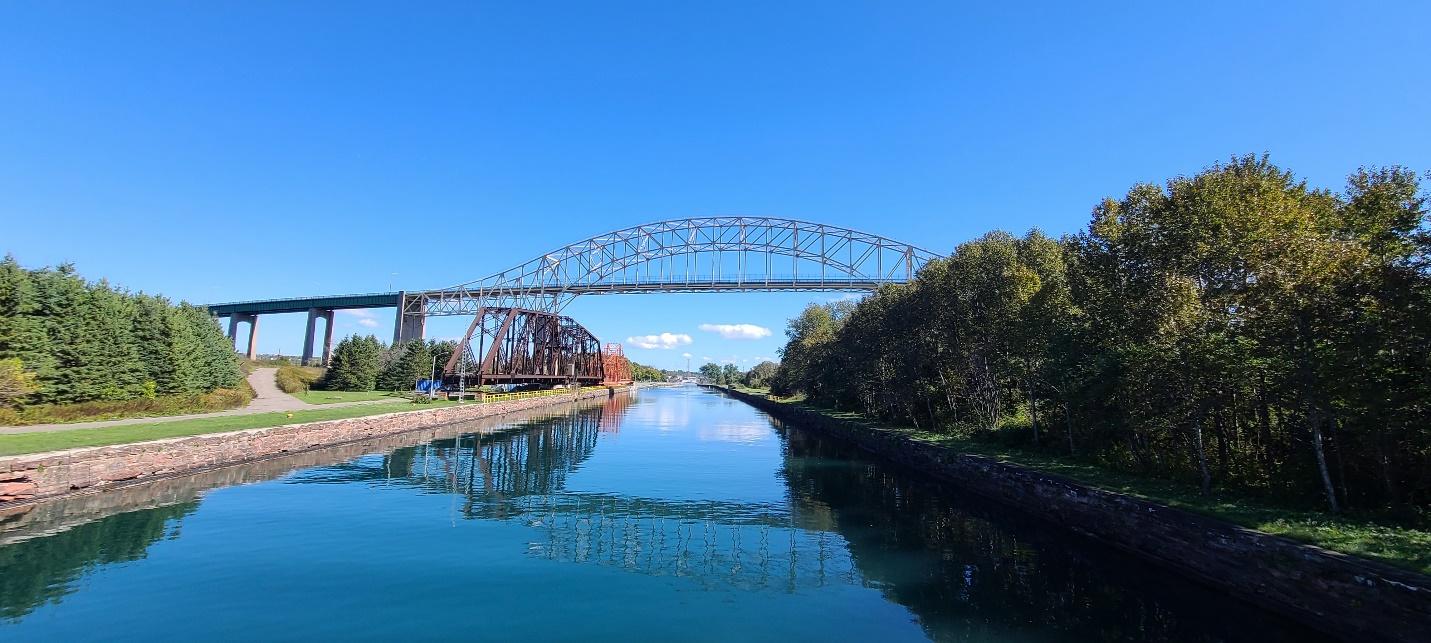
This unique swing dam reduces the flow of water in the event of an accident or gate failure.
Visitors can also see some of the original machinery that operates the lower lock valves and gates that allow boats to rise up or down 6.98 metres from one Great Lake to the other. You can also get a 360-degree view of the site and city on top of the Canalman’s Shelter.
7. The International Bridge
One of the top ten busiest passenger crossings on the Canada-United States border, this bridge officially opened to traffic on October 31, 1962, and remains an iconic structure along St. Marys River.
Places To Eat Near the Sault Ste. Marie Canal Historic Site
With all there is to do at the Sault Ste. Marie Canal Historic Site, you're likely to get hungry. Fortunately, great eating is not far away. Try these stops (listed in order from closest to the canal):
- The Gelato Mill for a bakery snack or Blockhouse Pub for more of a meal (walking distance: 6 minutes)
- Ernie’s Coffee Shop (13 minutes on foot, 4 minutes by car) Most definitely not your average coffee shop (spoiler alert: amazing restaurant with seasonal dishes)!
- The Whisky Barrel (13 minutes on foot, 4 minutes by car) A friendly Scottish pub with great food and beer selections. I highly recommend the Scotch egg!
- Peace Restaurant (5-minute drive) Excellent cocktails and tasty sharable tapas-style dishes.
- Georgies Shawarma (5-minute drive) Authentic Syrian restaurant with pita chips and fresh hummus made in-house.



Looking to combine paddling with foodie adventures? Read SUP, Sip, and Snack In and Around The Soo
Other Local Things to Check Out Near the Sault Ste. Marie Canal Historic Site
- The Agawa Canyon Tour Train
- The Canadian Bushplane Heritage Centre—in 1924, the establishment of the Ontario Provincial Air Service and the introduction of its waterfront hangars meant increased access and use of float planes for aerial supervision as well as fighting fires from the air. Learn about their role in Canada's past at this fascinating museum.
- The Sault Ste. Marie International Bridge—a beautiful bridge that connects us to our US neighbours.
Winter Fun at the Sault Ste. Marie Canal Historic Site
Spring and summer are not the only seasons you can visit! Here are some additional activities in the colder season:
- Enjoy a snowy hike or go snowshoeing on the Whitefish Island Trails
- Skate The Rink, a covered outdoor skating rink in Canal District
Frequently Asked Questions about the Sault Ste. Marie Historic Site
When can I visit the Sault Ste. Marie Canal National Historic Site? What are the hours of operation?
You can visit the site all year round, but the lock and the Parks Canada Visitor Center has its own hours of operation.
For Lockage, please contact the Canadian Lock Master of VHF Channel 14.
Lockmaster office phone: 705-941-2003
Parks Canada office phone: 705-941-6262
Is the Sault Ste. Marie Canal National Historic Site accessible?
Accessibility was considered throughout the design of the visitor centre. The team at the SSMC worked with the Parks Canada National Accessibility Team, Accessible Canada Act, and Ingenium Standards to apply accessible features such as high-contrast visual and text elements, height and angle of interpretation panels, and pass-through and turning spaces around exhibit elements. The site is also working on an audio component to add to outdoor interpretive panels.
How big is the Sault Canal Lock?
The lock is 77 metres long (250 feet) by 15.4 metres wide (50 feet) and has a minimum 3 metres draft (9.8 feet).
Can I paddle the Sault Canal Lock?
Yes, you can! Visitors can paddle a canoe or sea kayak into the 255-foot lock (call the lockmaster for access). It’s an exciting opportunity and only available on the Canadian side of the locks. Here are some considerations:
- Learn about locking through.
- Watch for boat traffic during peak hours.
- Mind your visibility and wear bright or reflective colours to make it easier for larger vessels to spot you.
- Mind the water conditions—changing water levels within the canal walls may cause turbulent and unpredictable movement of water.
Stand-up paddleboarders (SUP) are not allowed to lock or paddle through the canal. Any vessel, motorized or non, needs a rope to tie-off to lock through and follow the rules of locking.
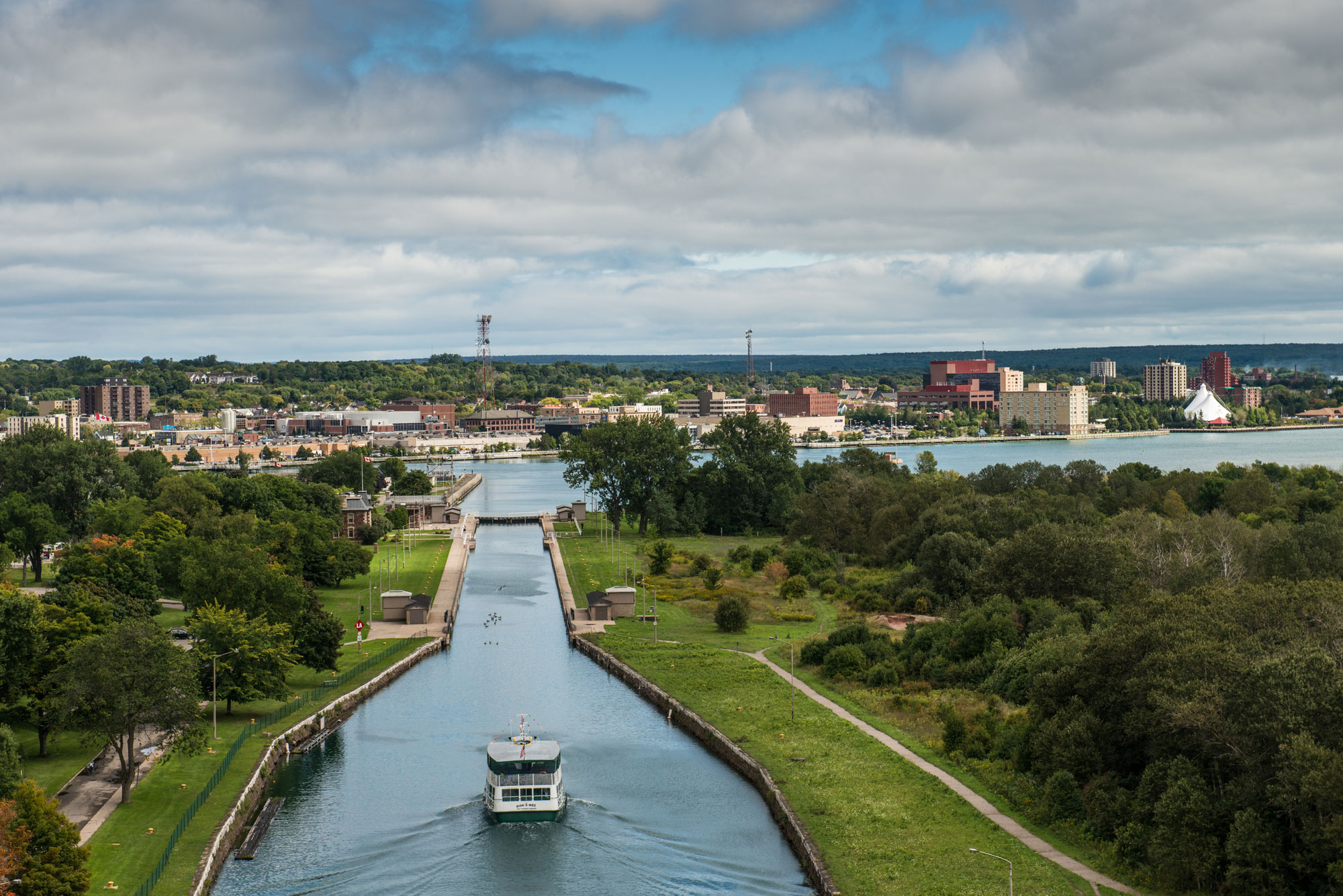
How can I learn more about Whitefish Island and the Indigenous history of the local area?
- Go to the Batchewana First Nation website
- Check out Thrive Tours, an Indigenous-owned and operated guided ecotourism company based in Sault Ste. Marie. They offer year-round adventures on land and water, with experiences that build on your connection with nature and beyond. Special thanks to Amanda for introducing me to Dean!
For more information, take a look at 7 Reasons to Add Thrive Tours to Your Northern Ontario Bucket List Adventure.
Plan Your Trip to the Sault Ste. Marie Canal National Historic Site in Sault Ste. Marie, Algoma Country Today!
Today, the canal, island, and the surrounding area remain sacred and special places. We can all play our part in preserving, rediscovering, and appreciating them in new ways to continue to enjoy them for years to come.
Reference/Resources
You can learn more about the Sault Ste. Marie Canal Historic Site, its history and how to plan your trip by visiting these websites:
- Batchewana First Nation
- Algoma Country—8 Things You Didn’t Know About the Sault Ste. Marie National Historic Site
- The Canadian Encyclopedia—St. Marys River
- Canada’s Historic Places
- Canadian Heritage River—St. Marys River
- City of Sault Ste. Marie—Sault Canal Lock
- Parks Canada—Sault Ste. Marie Canal Historic Site
- Added Indigenous Perspectives at Sault Ste. Marie Canal
- Parks Canada—The History of Sault Ste. Marie Canal National Historic Site
- For additional information and updates, follow the Sault Canal Facebook Page
- Read about more activities and experiences here
- Check out the Sault Ste. Marie Canal National Historic Site Events Calendar
- Site hours, amenities, how to get there, and more—Plan Your Visit
- Parks Canada—Directory of Federal Heritage Designations
- Parks Canada—Whitefish Island National Historic Site of Canada
- River of History Museum—Three Billion Years of Geologic History
- Sault Ste. Marie Tourism—Canal District
- Sault Ste. Marie Region Conservation Authority
- Watch Lake Superior Our Helper: Stories from Batchewanaung Anishinabek Fisheries, featuring Dean Sayers, former Chief of Batchewana First Nation
- Whitefish River First Nation—Brief History of the Robinson Huron Treaty of 1850 (link will download a PDF)
Recommended Articles

9 Facts to Know about the Agawa Canyon Tour Train
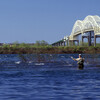
A Guide to the Best Urban Fishing in Sault Ste. Marie, Ontario

Where to Eat, Dine, and Play on the Sault Ste. Marie Waterfront

Cruising to the Next Level

Canada's Only Bushplane Museum is a Must For Your Bucket List

Why the Fall Is a Great Time to Visit Sault Ste. Marie
Canoe & Kayak Sault Ste. Marie

Peace Restaurant
